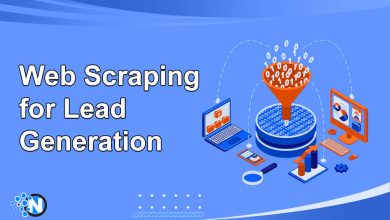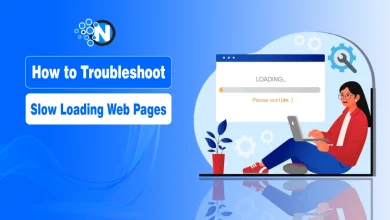List Crawling vs Web Scraping – Key Differences Explained

While extracting the data from the web, you will come across two specific methodologies, list crawling, and data scraping. Although both techniques are involved in extracting information from the web, they differ widely in different aspects. In this detailed guide on list crawling vs web scraping, I will highlight some of the major differences between both of them.
In these, automation plays a role. However, their application, methodologies, and purposes are not the same. Therefore, you have to pay significant attention to both of them. In this way, you can determine the technique which is suitable for you.
What is Web Scraping?
Start creating Verdict in seconds, and convert more of your visitors into leads.
Web scraping, more commonly known as web data extraction, is the process of extracting big data from websites. It involves several techniques to fetch the content available on the web along with parsing the HTML or XML structure. Ultimately, you can extract the desired information.
Web scraping can be used for a variety of purposes. The most common one includes price monitoring, research, and data analysis.
Methodologies
- HTML Parsing: It allows the extraction of data by parsing the HTML structure using libraries like BeautifulSoup, Requests-HTML, and HTML5lib in Python.
- DOM Parsing: DOM Parsing involves the Document Object Model to navigate and modify the structure of web documents.
- API Interaction: This method features interactions with web APIs to fetch structured data directly.
- Browser Automation: In this method, you can use tools like Selenium and Cypress to automate interactions with web pages and extract data that requires user interaction.
Practical Applications
- Price Comparison: Monitoring prices across various e-commerce sites.
- Market Research: Gathering data on trends, user behavior, and competitive analysis.
- Content Collection: Collecting news, articles, or other types of content for aggregation purposes.
What is List Crawling?
Start creating Verdict in seconds, and convert more of your visitors into leads.
List crawling refers to the process of crawling different web pages or browsing them systematically. Its primary purpose is to build an index or list of URLs. Search engines often use this technique is commonly to discover new pages.
Hence, they can index them for search results. List crawling usually refers to a subset of web scraping. Nevertheless, it is a specific technique with more specified goals.
Methodologies
- Spidering: Using automated scripts called spiders or bots to find links on web pages.
- Link Discovery: Extracting all hyperlinks on a page and following them to discover new pages.
- Scheduling: Implementing crawl schedules to revisit and update the index periodically.
Practical Applications
- Search Engine Indexing: Building and maintaining search engine indexes.
- Link Analysis: Analyzing the link structure of websites for SEO purposes.
- Website Monitoring: Keeping track of changes and updates on target websites.
List Crawling vs Web Scraping Key Differences
Start creating Verdict in seconds, and convert more of your visitors into leads.
Developers, especially those who are at the beginning of their careers, are so confused when it comes to differentiating these techniques. However, I have created a table of List Crawling vs Web Scraping to help you understand the key differences between them.
Although they overlap each other, web scraping and list crawling differ in their primary goals, methodologies, and applications. Here are some of the key differences:
| Aspect | List Crawling | Web Scrapping |
|---|---|---|
| Primary Goal | Discover and index URLs | Extract specific data from web pages |
| Data Granularity | Focuses on links and page discovery | Focuses on content within web pages |
| Tools Used | Spiders, Crawlers, Googlebot | BeautifulSoup, Scrapy, Selenium |
| Use Cases | Search engine indexing, link analysis, website monitoring | Price monitoring, market research, content collection |
| Complexity | Simpler, more about traversal and indexing | Often involves complex parsing and data extraction |
| Output | Lists of URLs and metadata | Structured data in formats like CSV, JSON, or databases |
| Frequency | Typically continuous and scheduled | Can be a one-time or continuous |
| Interactivity | Generally does not interact with page elements | Can handle interactive elements with browser automation |
| User Interaction | No user interaction handling is needed | Requires scripting to handle user interactions like form submissions |
| Content Handling | Focuses on hyperlinks and page metadata | Extracts text, images, links, tables, and more |
| Anti-scraping Measures | Less affected by anti-scraping measures | Must handle bot detection, CAPTCHAs, rate limits |
| Scalability | Scalable with efficient crawling algorithms | Scalable with parallel processing and distributed systems |
| Data Storage | Stores URL lists and crawl logs | Stores data in structured formats for analysis and reporting |
| Legal Concerns | Must comply with robots.txt and crawling policies | Must comply with website terms of service and copyright laws |
| Technology Requirements | Requires knowledge of crawling algorithms and web protocols | Requires knowledge of web technologies, parsing libraries, and scripting |
| Error Handling | Needs handling for broken links and redirect loops | Needs robust error handling for broken HTML and dynamic content |
| Customization | Customizable crawling strategies for efficient URL discovery | Highly customizable to extract specific elements from web pages |
| Page Access | Generally accesses publicly available pages | Must handle login and authentication for some data |
| Load on Servers | Designed to minimize load on servers by following polite crawling | Can create a significant load on target servers due to frequent requests |
| Dynamic Content | Generally not required to handle dynamic content | Can handle AJAX, JavaScript, and other dynamic content |
| Data Accuracy | Focuses on accurate URL indexing and discovery | Focuses on accurate data extraction and validation |
| Rate Limiting | Implements rate limiting strategies to be polite to servers | Needs to manage rate limits to avoid IP blocking |
| Compliance | Ensures compliance with robots.txt and no-follow directives | Ensures compliance with GDPR, CCPA, and other data protection laws |
| Relevance | Indexes URLs relevant to overall web discovery | Extracts data relevant to specific user needs |
| Duplication Handling | Avoids duplicate URL indexing | Avoids duplicate data extraction |
| Automation Level | High level of automation for URL discovery and indexing | High level of automation for data extraction and processing |
| Data Integration | Integrates discovered URLs into search engine databases | Integrates extracted data into databases, analytics platforms, or applications |
| Speed | Generally faster due to focusing on URL discovery | Can be slower due to detailed data extraction processes |
| Cost | Can incur costs related to hosting and maintaining crawler infrastructure | Can incur costs related to proxy services, CAPTCHAs, and API usage |
Final Thoughts
Start creating Verdict in seconds, and convert more of your visitors into leads.
These are the details about the list crawling vs web scraping. I have mentioned the key differences in this blog post so that you can identify the points where both these techniques differ from each other. Although they overlap each other in some of their functionalities, the primary goals and methodologies are different.
If you are a beginner developer and want to scale your growth, you need to understand the difference between them. It will enable you to take charge and get into this competition with a more effective approach.




